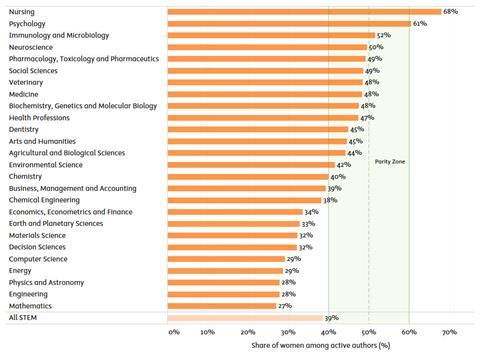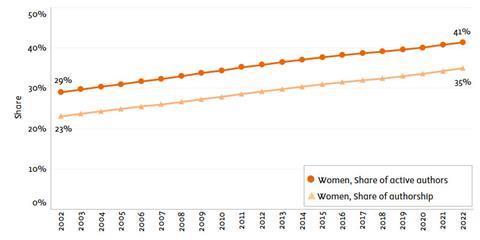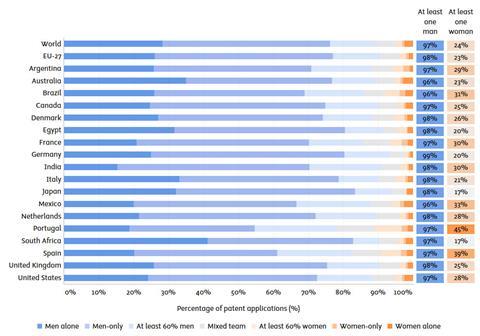Despite progress in the gender balance of the global scientific research enterprise over the last two decades, serious challenges persist, according to new analysis by the scientific publisher Elsevier. While more women than ever before are actively involved in research, they are still underrepresented across many fields, career stages and as authors of papers and patents.
The new analysis shows that women represented 41% of the world’s active researchers as of 2022, compared with 28% in 2001. This is the first time that female representation in research has reached the parity zone of 40–60%.

However, female involvement in research varies significantly by field. While women are well represented in the health sciences, including in nursing and microbiology, they remain underrepresented across multiple scientific fields. Across the physical sciences, for example, just 33% of researchers are female. In chemistry, 40% of researchers worldwide are female, while that figure is at 38% and 32% for chemical engineering and material sciences, respectively.
And while almost half of early-career researchers are female, women account for just 27% of researchers in the most advanced stages of their careers.
The new report also identified a persistent gap between the share of women working in research and their inclusion as authors on research papers. While women made up 41% of active researchers in 2022, only 35% of research papers featured female authors. This gap has remained steady over the last two decades, which Elsevier suggests is due to ‘systemic issues that prevent women from publishing as often as men’. The report also points out that publications authored by men are, on average, cited more often than those written by women.

Inequalities are also seen in research funding, although for women the average share appears to be increasing slowly. Of the countries with sufficient grant data to allow for analysis, the average share for female grant awardees rose from 29% in 2009 to 37% in 2022. The largest increases were seen in the Netherlands, Denmark, UK, France, Canada and Portugal. ‘Although women gained more grant awards, these gains were not sufficient to keep pace with the growing proportion of women active researchers,’ the report notes.
Women were also shown to be vastly underrepresented in patent applications. As of 2022, three quarters of patent applications are either filed by men working alone or by teams consisting only of men. Nearly all teams applying for patents have at least one man on them, while just 3% of patent applications are filed by teams consisting of only women.

The report makes several recommendations, including prioritising the retention of early-career female researchers into mid- and advanced career stages and developing incentive structures to help women play an equal part in the full research and innovation value chain. Other recommendations include applying a broad range of indicators to measure research effectiveness like societal and policy impact, and continuing to collect and report inclusion and diversity data to monitor progress, identify gaps, evaluate policies and drive accountability.
Disappointed and unsurprised
‘I’m disappointed and unsurprised,’ says Polly Arnold, a chemistry professor at the University of California, Berkeley who also directs the chemical sciences division at Lawrence Berkeley National Laboratory and is a champion of diversity in science. ‘There hasn’t been enough, if any, systems change,’ she continues. ‘So everyone’s biases against underrepresented groups will continue to hamper our ability to recognise and support talent.’
Shirley Malcom, senior adviser and director of the Stem Equity Achievement Change initiative at the American Association for the Advancement of Science, says the report underscores the complexity of the current science ecosystem for women. ‘While there has been progress in representation, research support, publications and the like in some countries and in many fields, there are also challenges that call out for intentional interventions,’ Malcom tells Chemistry World. ‘Life sciences research by women has been trending upward for many years and we are seeing the fruits of that in the numbers, as well as in the impact, but the strength of that trend of women’s enhanced participation does not yet extend as strongly to the innovation ecosystem, for example.’
Malcom adds that the extent to which there is progress for women in scientific disciplines reflects the culture of these fields and across-the-board opportunities for women reflect the culture of the countries and prevailing attitudes on the role of women. ‘Who is valued – and whose work is valued – within science seems excessively tied to things that can be counted and less so on things that count.’

















No comments yet